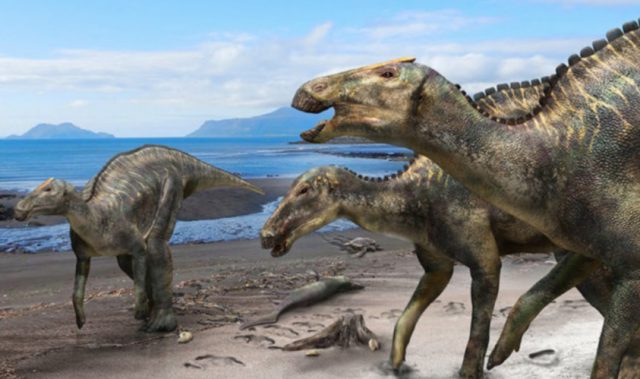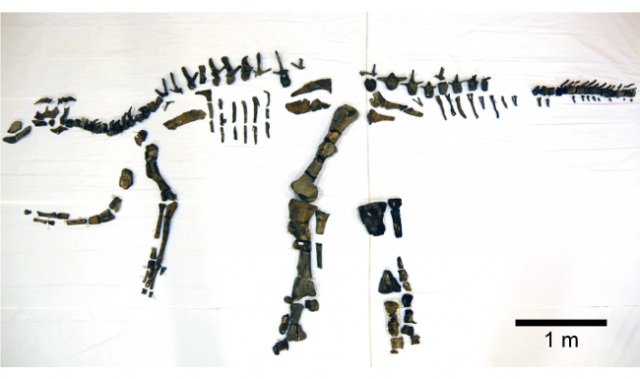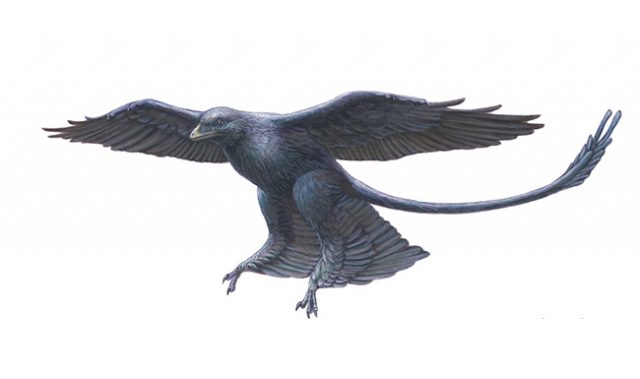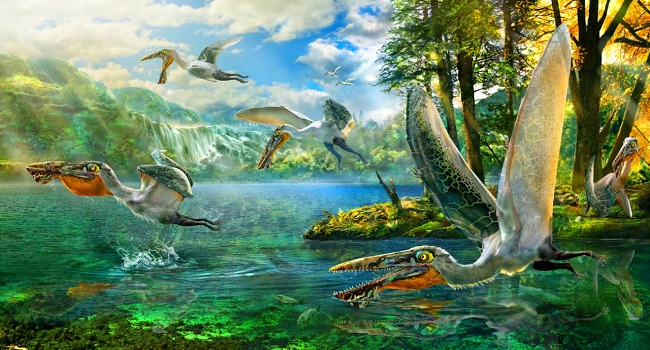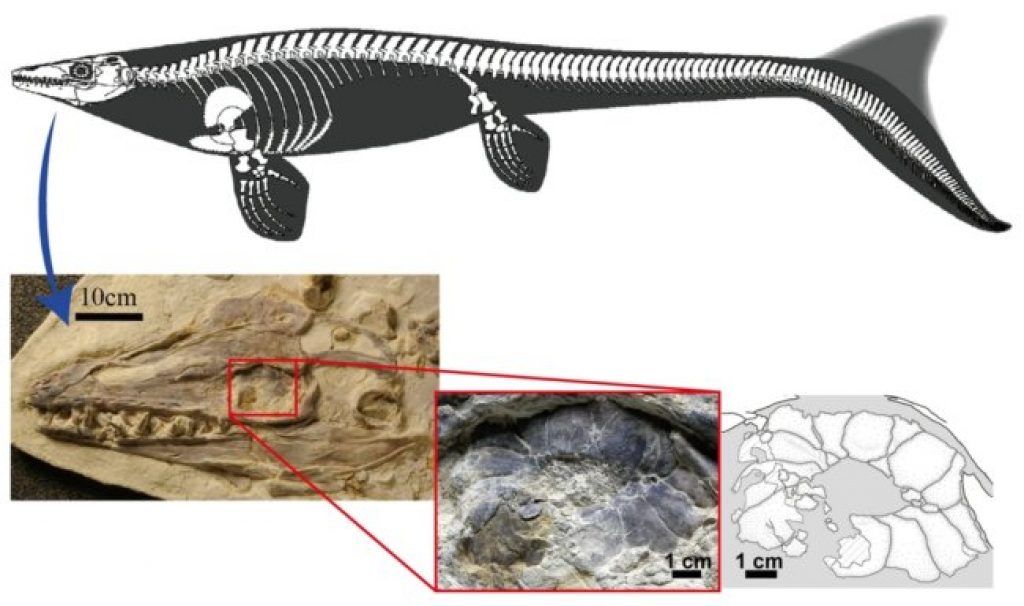
AsianScientist (Mar. 2, 2015) – A study of the eye structures of a group of ancient lizards known as Mosasaurs has revealed that the structure of the sclerotic ossicles was unlikely to have played a role in adaptation to aquatic environments. The study documenting these findings has been published in PLOS ONE.
Mosasaurs were a group of aquatic lizards from 98 to 66 million years ago that exhibited a high degree of adaptation to life in water. Sclerotic rings are a hoop-like bony structure that forms a ring around the eyeball of some vertebrates. Despite the rich fossil record, the complete structure of the sclerotic rings in mosasaurs has not been thoroughly investigated because of difficulties in preservation.
Graduate student Momo Yamashita and her collaborators at the University of Tokyo Graduate School of Science compared fossilized sclerotic rings of mosasaurs with those of modern lizards. This comparison revealed that the arrangement of scleral ossicles—the individual bones that make up the sclerotic ring—is shared between two genera of mosasaurs and many taxa of living lizards, whereas the inner face of the sclerotic ring is textured only in mosasaurs.
Mosasaurs lived in both terrestrial and aquatic environments while lizards live only in terrestrial environments. Despite this evolutionary change, the arrangement of scleral ossicles is maintained in both. This suggests that the arrangement seen in mosasaurs and living lizards is a primitive feature and has been evolutionarily preserved.
On the other hand, the inner surface of the mosasaur sclerotic ring shows a raised, concentric band of roughened texture. This may be an adaptation to the different ways of accommodation to differing focal distance in aquatic and terrestrial environments, suggesting that this feature may be related to adaptation to aquatic vision in mosasaurs.
The sclerotic ring is the only hard tissue that is easily preserved as a fossil of an eye and provides valuable clues for understanding visual function in fossil species. In combination with further investigation of living lizards, it is expected that this research will further our understanding of the visual function of mosasaurs and other lizards.
The article can be found at: Yamashita et al. (2015) Sclerotic Rings in Mosasaurs (Squamata: Mosasauridae): Structures and Taxonomic Diversity.
—–
Source: University of Tokyo.
Disclaimer: This article does not necessarily reflect the views of AsianScientist or its staff.





